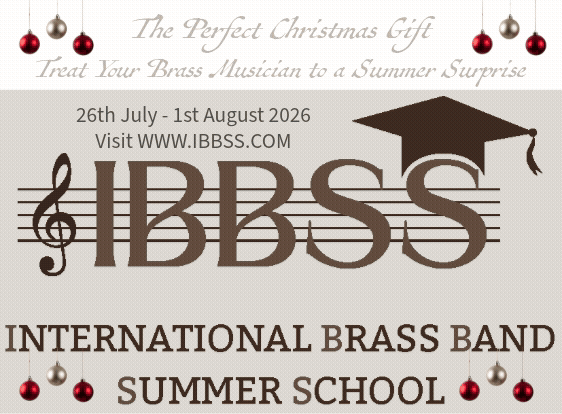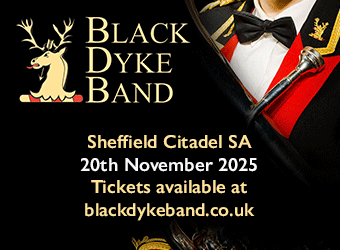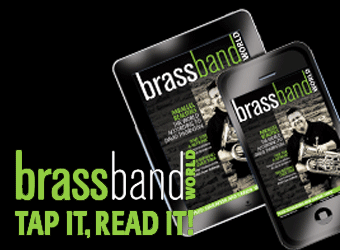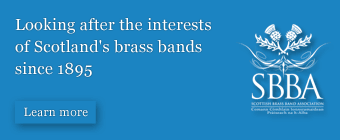Now this is a question you don’t often hear in a brass band context.
What do Adolf Hitler, the Mormon Church and Kenneth Downie have in common?
Well?
The answer is that they have all been the unwitting victims of blatant forgery; attempts by clever counterfeiters to deliberately hoodwink us into believing that something they’ve created is the genuine article, when in fact it’s complete and utter tosh.
Hook, line and sinker
The perpetrators of the infamous ‘diaries’ of the leader of the Third Reich and the ‘Anthon Transcripts’ of the Latter Day Saints Church were eventually exposed - although not before a great deal of embarrassment was suffered by those suckered into the scams, hook, line and sinker.
However, the Keyser Soze mastermind responsible for the most infamous piece of brass band test piece fabrication in history remains at large; churning out the fake musical relics of ‘St Magnus’ like a medieval Catholic cleric selling dodgy indulgences with the promise of a guilt free trip to heaven (or the Albert Hall in this 2014 case).
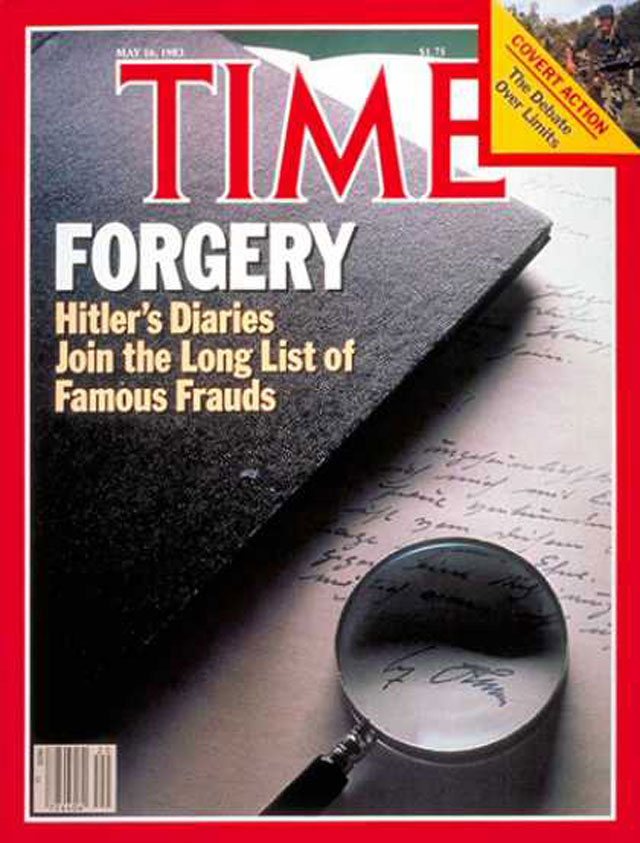
How to spot a forgery...
Bespoke forgeries
And whilst this particular white collar Sibelius computer crime is nothing new, it remains a rather unique piece of pernicious synthetic deception: Such is the prize on offer that 10 years after Kenneth Downie’s composition was subject to counterfeiting, the forgeries themselves are now being copied and passed off as ‘bespoke’ originals.
You could hazard a pretty decent guess that well over half the bands that take to the various Area stages in the next few weeks will play a version of ‘St Magnus’ that has the same number of authentic parts as a Rolex watch bought for twenty quid from a holiday street trader on the Costa del Sol.
Superdry
The bogus amendments to Kenneth Downie’s wonderful test piece may not be as expertly manufactured as Mark Hoffman’s Mormon efforts (just about everyone knows where the piece has been doctored), but they’ve still been more than good enough to fool quite a few top flight adjudicators over the years.
Nowadays, it’s a bit like admiring the fresco of ‘The Last Supper’ knowing that a couple of the apostles are wearing clothing repainted with ‘Superdry’ labels stitched into their sleeves.
Respighi
The great pity is that few people think of this type of test piece forgery as a particularly serious form of deception - mirroring a piece of correspondence the 4BR Editor once received from a well known youth band conductor.
He insisted that criticism of his band playing the wrong rhythms in the famous march from the ‘Pines of Rome’ was erroneous.
Not only had he rewritten them to be played like that, but that it was his committed belief that Respighi should have composed them in the same way in the first place.
So just how did the great ‘St Magnus’ forgery arise? - and who was responsible for it all?
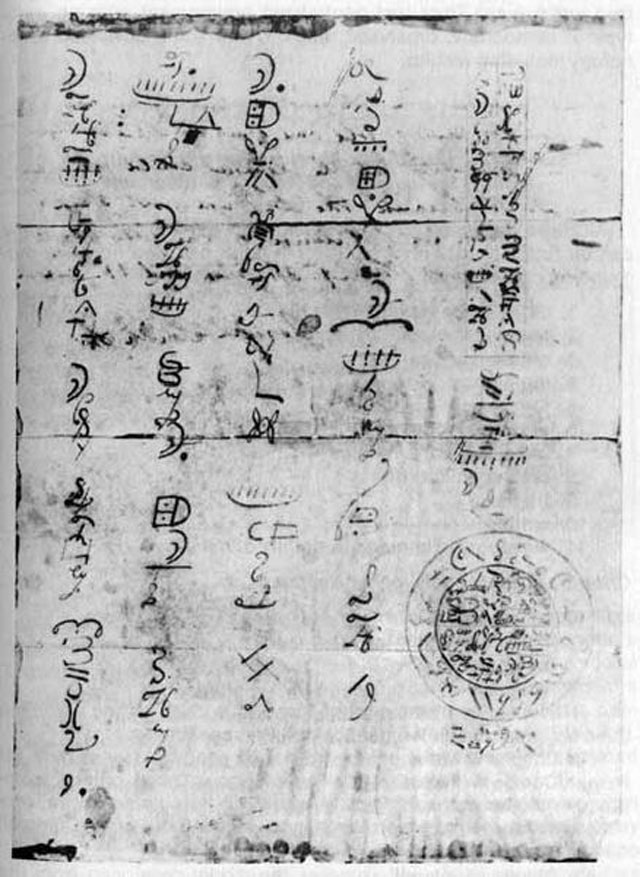
Mark Hoffman's Anthon Transcripts...
Kernel
The kernel of this particular deceit can be traced back to the 2004 European Championships held in Scotland.
That particular weekend the air at the Royal Concert Hall in Glasgow was filled with murmurings that more than one band was playing a version of the set work completely different to the one written by the composer.
The actual identity of the person who completed the very first saintly fake remains a well educated guess (as are the bands that played corrupted versions of the test piece on the day), although by the time it had been played at the Butlins Championship in 2006, the deceit had become more than mere urban myth - with copies of amended versions from different sources being used by competitors at the British Open and New Zealand Championships.
So when it was announced that ‘St Magnus’ was to be used at the 2014 Area Championships, those in the know were yet again receiving the type of ‘nudge, nudge, wink, wink’ enquiries for something a bit ‘naughty’ that is usually the reserve of a seedy Soho porn shop owner.
As a result, more than a few furtive conductors made their way to rehearsal with a little something ‘exotic’ from under the counter hidden in a brown paper bag.
Provenance
So what is the fuss all about?
Not a great amount in terms in quantity - but plenty in terms of provenance.
Although the most ‘authentic’ forgeries amend parts in each of its five variations, the ‘cheap as chips’ versions that most bands try to pass off as the real thing are centred on the 16 bars found between rehearsal letters U to V.
In the original, the first six bars do not pose a problem: They are all written in four in a bar.
Things start to get a bit more complicated by bar 7; written in 5/8, which is followed by single bars of 5/16, 5/8, 5/16, 5/8, 7/16, 5/8 and 5/8, before finally coming to rest with two bars of 3/4.
On the other hand, the most forged versions have eight consecutive bars of 4/4, followed by a single bar in 2/4, a single bar in 7/16, a bar of 6/8 and one in 2/4, before reaching the concluding two bars of 3/4.
Quick fix?
Does this really matter?
Perhaps not if you think that one man’s forgery is another’s quick fix - but given that the underlying pulse of the music is completely changed, and that the trombones (who have to fit in a tricky rhythmic pattern of their own in the original) are left high and dry to fend for themselves (their ‘new’ part is almost impossible to link up successfully), then you may like to think again.
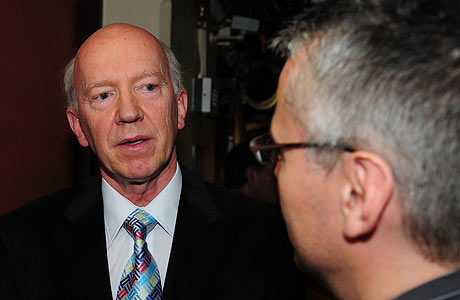
Not a man to be scammed: Composer Kenneth Downie
Hoodwink
If Kenneth Downie really wanted it to sound as eight bars of 4/4 before making it bit trickier, he would have surely written it that way, wouldn’t he have now?
Like Respighi - he didn’t.
And despite old Adolf and the Momron brethren being the type people you may feel deserve to be scammed, you can be sure that such a highly respected composer and wonderful man such as Kenneth Downie, does not.
Perhaps a few conductors may want to remind themselves of that before they try and hoodwink us all into believing in the provenance of their winning performances over the next few weekends.
Iwan Fox



